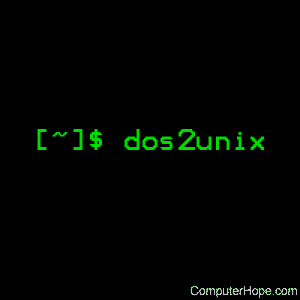

Vim will look for both dos and unix line endings, but Vim has a built-in preference for the unix format. Suppose your system has ffs=dos,unix and you open an existing file.

The order is only important when a new buffer is created (if not empty, the first item in 'ffs' is used as the file format for a new buffer this determines which line endings will be added when the buffer is saved). When a file is read, the order of the items specified in 'ffs' has no effect (for example, ffs=unix,dos has the same effect as ffs=dos,unix when reading). The 'fileformats' option ( 'ffs') has these defaults: However, the above command may indicate that the option was set in your vimrc because that file probably contains set nocompatible which sets many options. The fileformats option is often not explicitly set (the defaults are usually adequate). This command also shows where each option was last set: The following command displays the fileformat option (abbreviated as ff) for the current buffer, and the fileformats global option (abbreviated as ffs) which determines how Vim reads and writes files: :help 'ff' :help 'ffs' :set ff? ffs? The first file format in 'fileformats' is also used as the default for a new buffer.

The 'fileformats' option is global and specifies which file formats will be tried when Vim reads a file (unless otherwise specified, Vim attempts to automatically detect which file format should be used to read a file). In addition, the 'fileformat' option can be changed to specify the line endings that will be added to each line when the buffer is written to a file.
How to convert dos file to unix on mac how to#
It is set by Vim when a file is read, or can be specified in a command telling Vim how to read a file. The 'fileformat' option is local to each buffer. 9 Results of incorrect file format detection.6 Removing unwanted CR or LF characters.Sometimes, LF is written as NL (newline). LF is linefeed (move cursor down), which is Ctrl-J or ^J or hex 0A.
How to convert dos file to unix on mac mac os x#
Unix based systems and Mac OS X and later.ĬR only (each line ends with a CR character).ĬR is carriage return (return cursor to left margin), which is Ctrl-M or ^M or hex 0D. LF only (each line ends with an LF character). The line terminator expected for each file format is: See below if all you want to know is how to remove ^M characters, or how to fix the line endings in the file you are working on (in brief, enter :e ++ff=dos to remove ^M when viewing a file). Use of the 'fileformat' and 'fileformats' options is also explained. This tip explains how to avoid problems, and how to convert from one file format to another.

A file format problem can display ^M characters, or can prevent scripts from running correctly. Vim recognizes three file formats (unix, dos, mac) that determine what line ending characters (line terminators) are removed from each line when a file is read, or are added to each line when a file is written. Tip 1585 Printable Monobook Previous Next


 0 kommentar(er)
0 kommentar(er)
